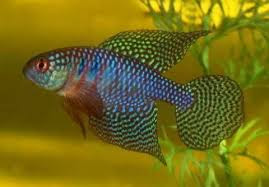Spiny dogfish are a remarkable fish Feeding on plankton as Pauly would wish. Gluttony is a sin that is not on their souls, And they grow so slowly they become very old. Babies arrive all ready to play After living in their moms for two years less a day. Peaceful in life, they avoided confrontation Until humans arrived with merciless exploitation. Stewardship and respect was not in our game As we fished and destroyed without any shame. It is amazing how people with advanced education Could plot or ignore attempts at extermination. But citizens’ concerns have given dogfish rights, So it is now up to us to finish this poem.
Beginning a scientific article with an amateur poem
may be highly unusual, but it draws one’s attention
to the highly unusual lack of attention paid to
spiny dogfish Squalus acanthias by the stewards of
our marine ecosystems. A general understanding
of the biology of dogfish has been summarized in
some excellent publications (Ford 1921; Bonham
1954; Ketchen 1975, 1986). Although the basic
biology is known, there is no clear understanding
of dogfish ecology. This is surprising considering
the species’ current and historical importance to
the commercial fisheries. In 2002, dogfish in the
commercial fishery averaged Can$0.66/kg ($0.30/
lb); compare this to $1.29/kg ($0.59/lb) for Pacific
cod Gadus macrocephalus, $0.34/kg ($0.15/lb) for
pink salmon Oncorhynchus gorbuscha, or $1.93/kg
($0.88/lb) for lingcod Ophiodon elongatus. It is clear
that the commercial value of spiny dogfish justifies
more research to improve our understanding of the
processes that regulate its production.
Their long life, late maturity,
Their long life, late maturity, and slow growth
mean that most spiny dogfish in the current commercial
fishery were born before the mid-1970s
and that individuals born now will be fished from
about 2025 to 2050. (This also means that decisions
we make today will be relevant through to the end
of this century.) Consequently we must look back
20–50 years to understand the factors that produced
the current exploitable biomass. Ketchen (1986) reviewed the history of spiny
dogfish management, and in this report we review
his summary. Our viewpoint is that history has not
Beamish et al.
2
been respectful of dogfish either as a species or as an
animal sharing a common ecosystem. The reader is
referred to Ketchen (1986) for his detailed account
of the dogfish fishery, which was the largest fishery in
British Columbia in 1944 (Figure 1) and the fourth
largest in Canada. Since 1986, the catch of spiny
dogfish has been relatively stable at approximately
5,000 metric tons (mt) per year. Approximately 30%
of this catch is from the Strait of Georgia. Dogfish
quotas of 15,000 mt (offshore stock) and 3,000 mt
(Strait of Georgia stock) for Canadian Pacific waters
have remained unchanged since the early 1980s. In
2000, total landings averaged less than 5,000 mt,
of which 1,200 mt came from the Strait of Georgia.
Longline catches in the strait account for over 95%
of the landings.






















